Parterre gardens represent one of the most sophisticated and enduring forms of landscape design, combining geometric precision with horticultural artistry. These formal garden spaces, originally developed in 16th-century France, create stunning visual patterns that are best appreciated from elevated viewpoints. The word parterre comes from the French term for 'on the ground', as these gardens were designed to be viewed from above. Today's parterre gardens have evolved beyond their classical origins to embrace contemporary materials, diverse plant palettes, and innovative design approaches while maintaining their essential character of structured beauty and mathematical precision.
1. Traditional Boxwood Parterre Garden
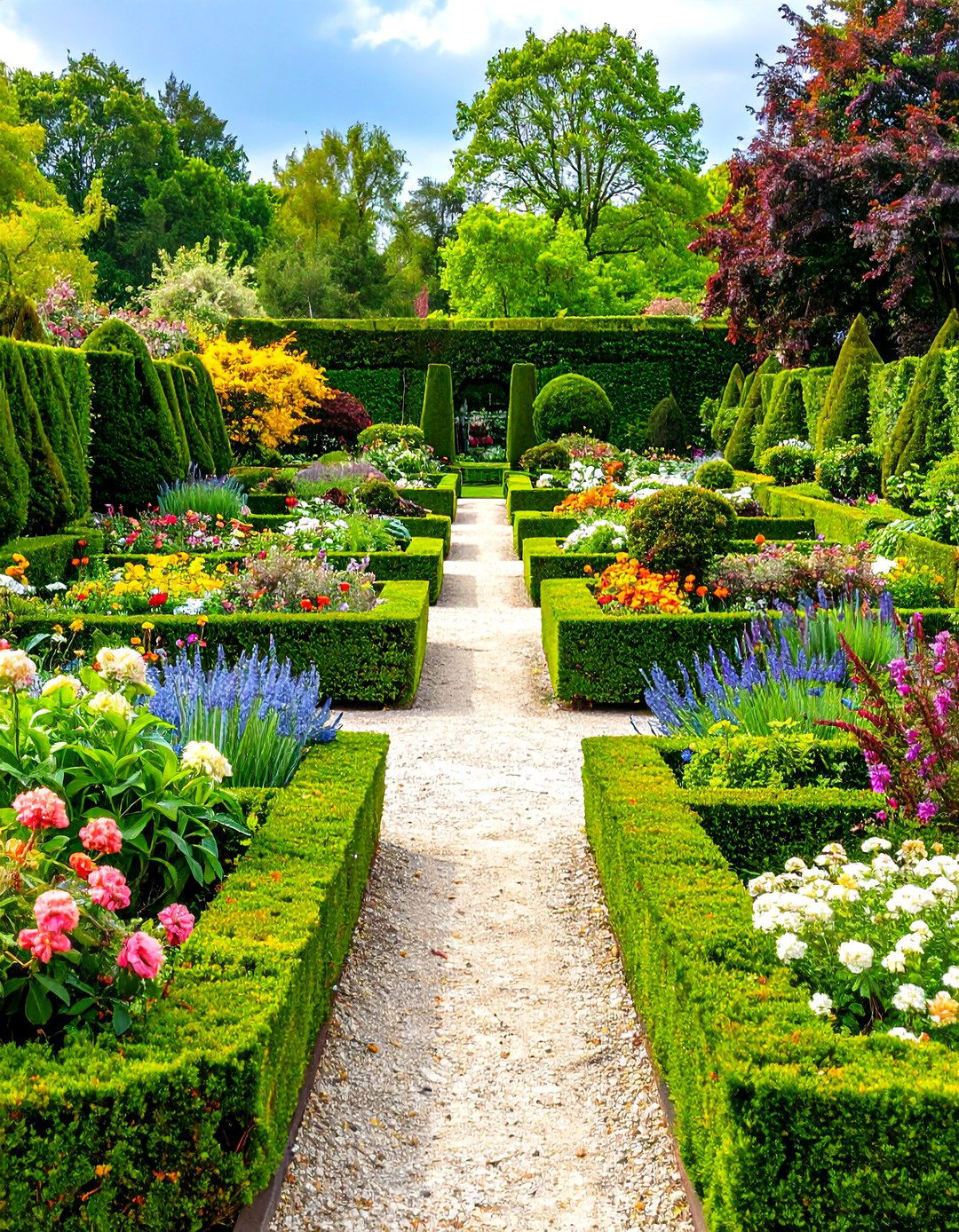
The classic boxwood parterre garden remains the gold standard for formal landscape design, featuring intricate geometric patterns created with meticulously maintained Buxus sempervirens hedging. These gardens consist of low box hedging surrounding colourful flower beds in elaborate patterns. The dense, evergreen foliage of boxwood provides year-round structure, while interior spaces can be filled with seasonal displays of tulips, roses, or ornamental grasses. Traditional designs often incorporate scrollwork patterns reminiscent of embroidery, with gravel pathways separating different compartments. The timeless appeal of this approach lies in its ability to create sophisticated outdoor rooms that provide both visual interest and practical organization for plant displays throughout the changing seasons.
2. Contemporary Geometric Parterre Garden
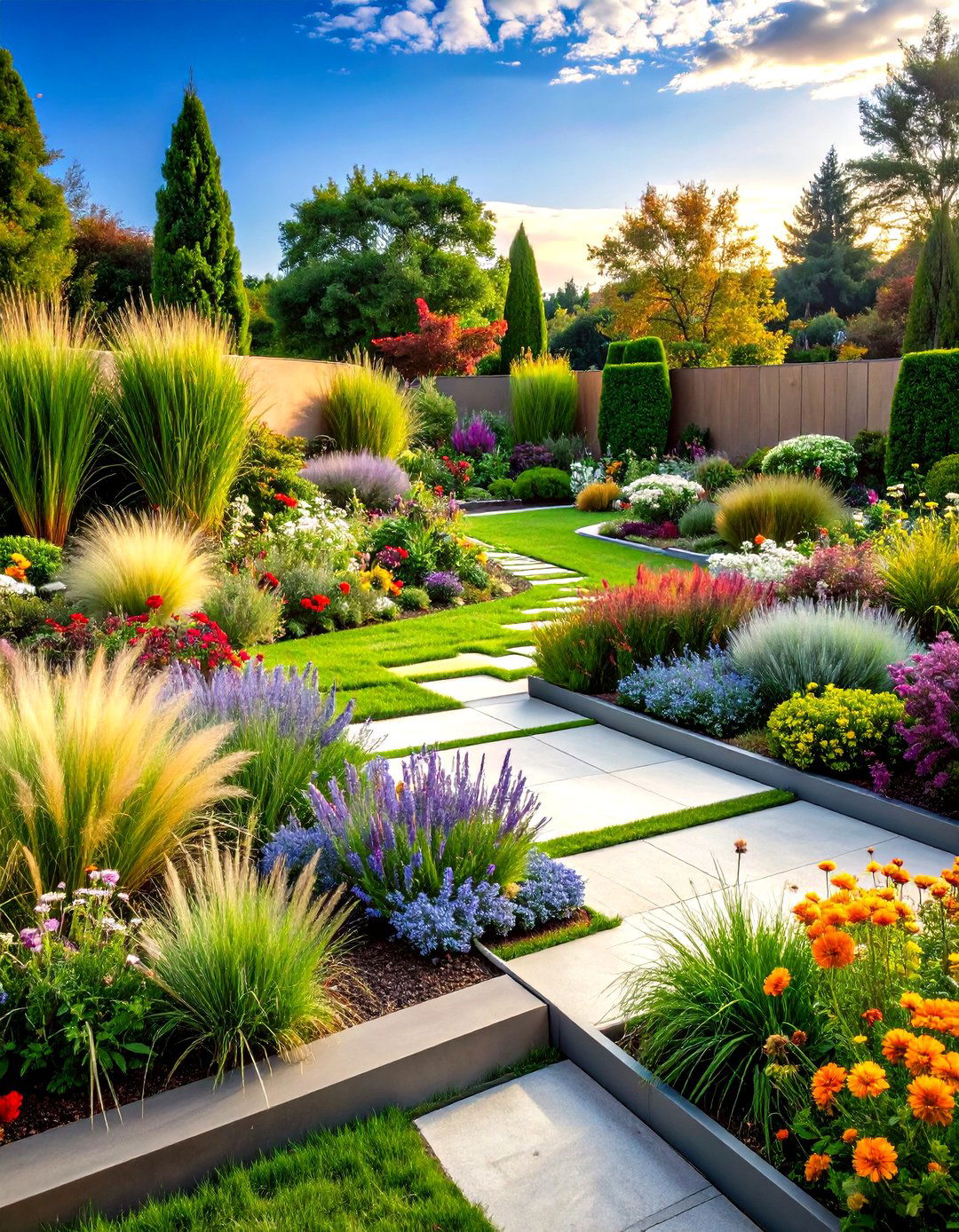
Modern parterre gardens embrace clean lines and simplified geometric forms that complement contemporary architecture and lifestyle preferences. For contemporary houses, simple grid layouts of squares or circles work very well. These designs feature bold, angular patterns using materials like steel edging, concrete borders, or alternative evergreen plants such as Euonymus japonicus. The planting palette tends toward architectural plants like ornamental grasses, succulents, and perennials with strong structural forms. Color schemes often employ monochromatic approaches or striking contrasts, creating sophisticated outdoor spaces that feel both formal and relaxed. This contemporary interpretation maintains the essential parterre principle of geometric order while embracing modern materials and plant choices.
3. Herb-Filled Parterre Garden
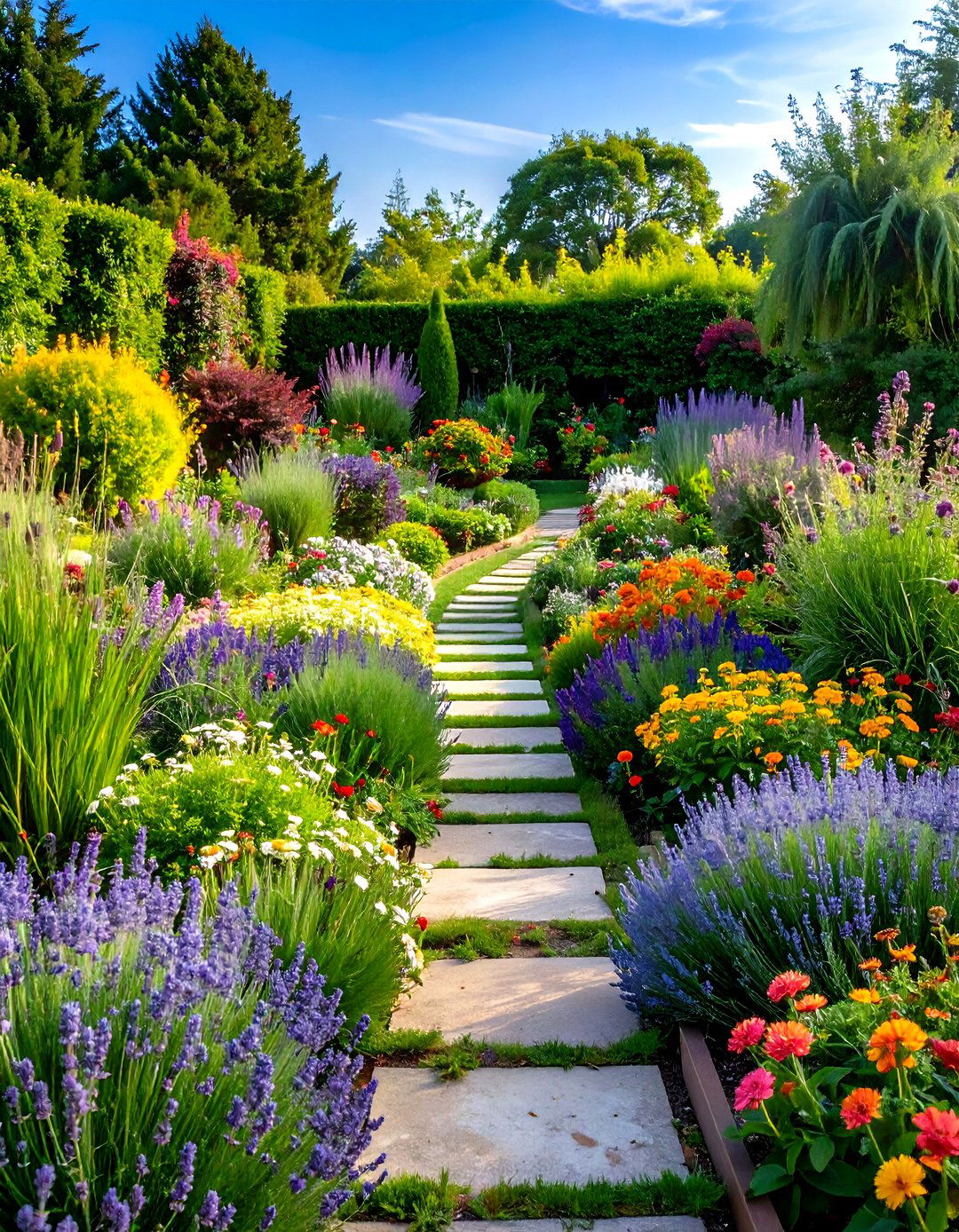
Transforming the traditional parterre into a functional herb garden combines beauty with practicality, creating an organized growing space that serves both culinary and aesthetic purposes. Traditional plants used in knot gardens include germander, marjoram, thyme, southernwood, lemon balm, hyssop, and rosemary. The structured layout makes herb harvesting efficient while creating stunning visual displays through contrasting foliage textures and colors. Different herb varieties can be organized by culinary use, growth habits, or seasonal interest, with pathways providing easy access for maintenance and harvesting. This approach transforms the ornamental parterre into a productive landscape feature that engages multiple senses through fragrance, texture, and taste while maintaining the formal structure that defines classical parterre design.
4. Seasonal Color Rotation Parterre Garden
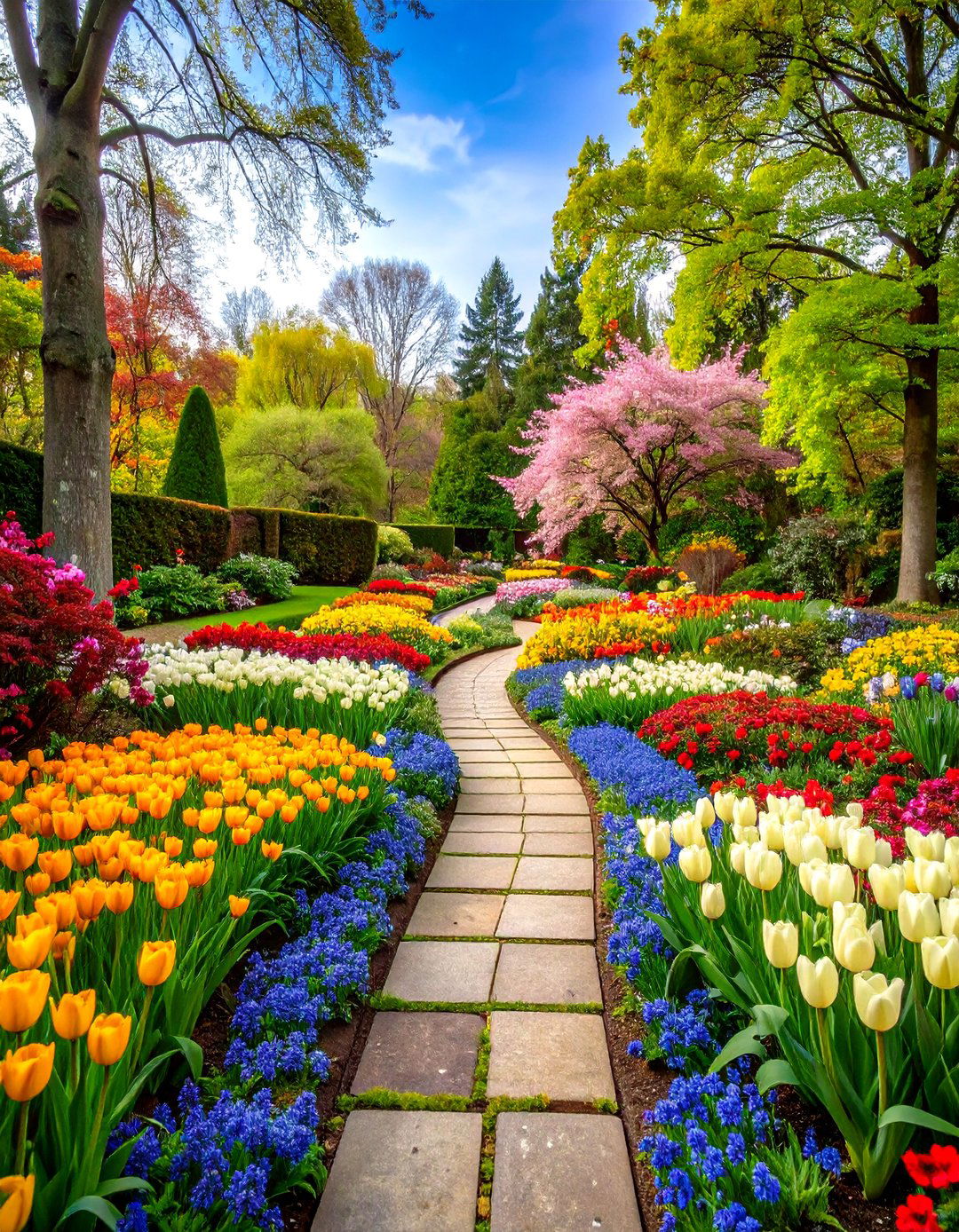
Dynamic parterre gardens that change dramatically with the seasons create ever-evolving displays that maintain interest throughout the year. Beds can be filled with ornamental flowers, replaced throughout the year to create constant colour and interest, with spring combinations of wallflowers and forget-me-nots with tulips, followed by summer displays. This approach requires careful planning to ensure smooth transitions between seasonal plantings while maintaining the geometric integrity of the design. Spring might feature tulips and daffodils, summer could showcase annuals like petunias and marigolds, while autumn displays might include chrysanthemums and ornamental cabbages. The constant renewal keeps the garden looking fresh and provides opportunities to experiment with new color combinations and plant varieties.
5. Drought-Tolerant Parterre Garden

Water-wise parterre gardens adapt classical principles to contemporary environmental concerns, using drought-tolerant plants and sustainable materials to create low-maintenance formal landscapes. For Mediterranean climates, drought-tolerant plants like rosemary, lavender, and santolina are excellent choices, using gravel or stone in the infills to reduce water needs. These gardens might feature succulent borders, ornamental grasses, and native plants arranged in geometric patterns, with decomposed granite or gravel pathways instead of traditional lawn areas. The structured approach of parterre design actually enhances water efficiency by grouping plants with similar water requirements and creating clearly defined irrigation zones. This sustainable approach maintains the formal beauty of traditional parterres while addressing modern environmental challenges.
6. Rose-Centered Parterre Garden

Rose-focused parterre gardens combine the queen of flowers with formal geometric structure, creating romantic yet organized displays that showcase different rose varieties throughout the growing season. These gardens can feature David Austin shrub roses combined with perennials, with seasonal spring planting of wallflowers, forget-me-nots, and tulips. The formal framework provides structure for climbing roses on pergolas or arches, while ground-level beds can feature hybrid teas, floribundas, and shrub roses arranged by color or bloom time. Companion plantings of lavender, catmint, and other perennials enhance the roses while providing extended seasonal interest. The geometric organization makes rose care more efficient while creating stunning visual impact during peak blooming periods.
7. Miniature Courtyard Parterre Garden

Small-scale parterre gardens prove that formal design principles can be successfully adapted to intimate spaces, creating sophisticated focal points in urban courtyards, small backyards, or entrance areas. Parterre gardens can be designed into all sizes of backyards – from small courtyards to large country plots. These compact designs might feature a single geometric pattern with dwarf plants like miniature boxwood, small hostas, or compact perennials arranged in precise patterns. Central focal points such as small fountains, sculptures, or specimen plants provide vertical interest, while the surrounding geometric beds create a sense of order and sophistication. The scaled-down approach makes maintenance manageable while delivering maximum visual impact in limited space.
8. Perennial-Based Parterre Garden

Long-lasting parterre gardens built around hardy perennials provide sustained beauty with reduced maintenance requirements, creating structures that become more beautiful with age. Low-growing perennials such as sedum, dianthus, or geraniums provide consistent color and texture year after year. These gardens might feature borders of ornamental grasses, structural perennials like hostas or heucheras, and flowering plants chosen for extended bloom periods and attractive foliage. The perennial approach creates gardens that improve over time as plants mature and spread, filling out the geometric patterns naturally. This sustainable method reduces annual replanting while providing four-season interest through careful selection of plants with varying bloom times and foliage characteristics.
9. Topiary-Enhanced Parterre Garden
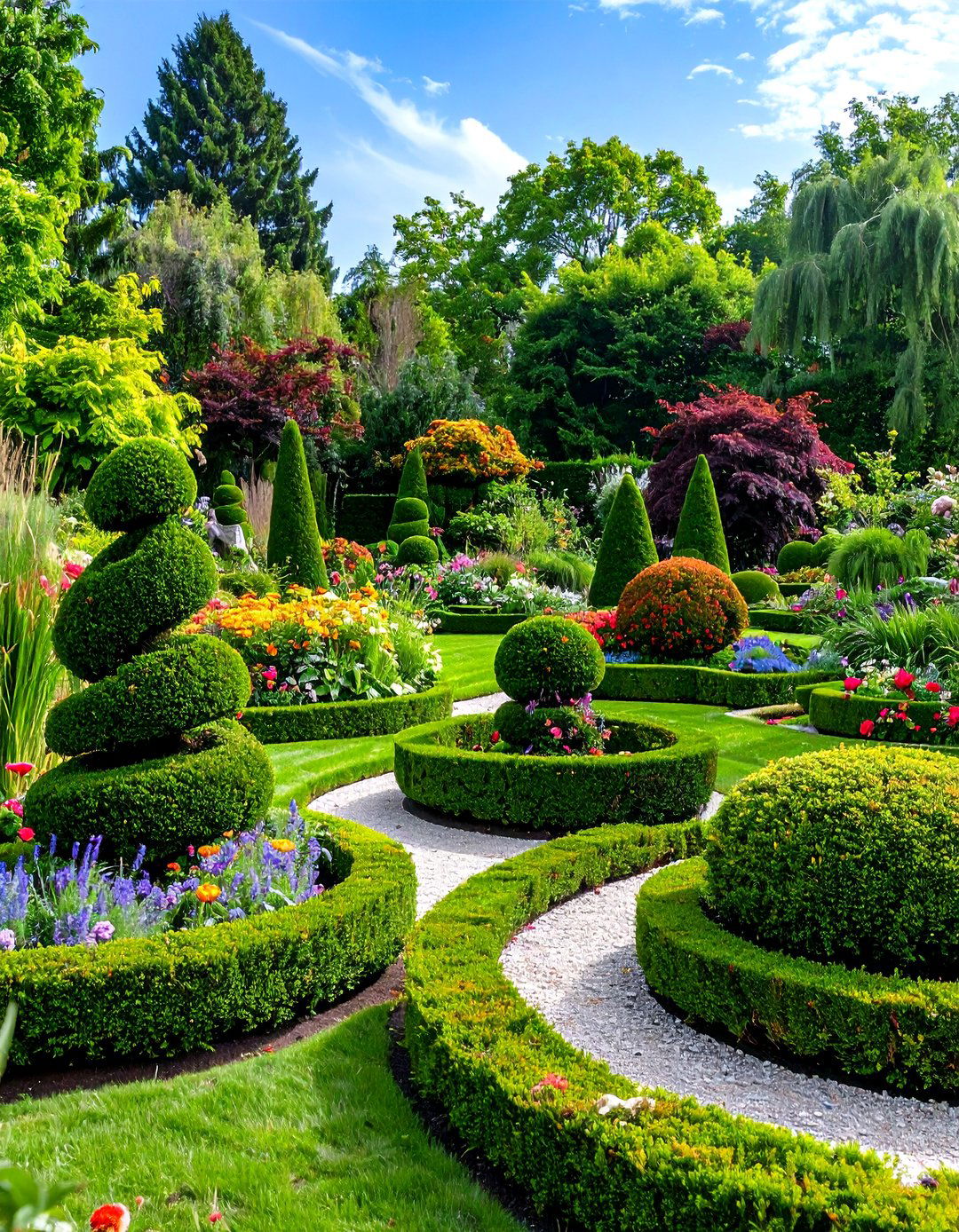
Sculptural parterre gardens incorporate topiary elements to add vertical dimension and artistic flair to traditional geometric layouts, creating living sculptures within formal frameworks. These gardens can feature boxwood, roses, and topiaried flowering trees with low-maintenance perennials. Carefully shaped evergreen shrubs serve as focal points or repeated elements throughout the design, while traditional parterre hedging creates the underlying geometric structure. The topiary elements might include spheres, cones, spirals, or more complex shapes that add personality and craftsmanship to the garden. This approach requires skilled maintenance but creates gardens of exceptional beauty and sophistication that showcase the highest levels of horticultural artistry.
10. Edible Landscape Parterre Garden
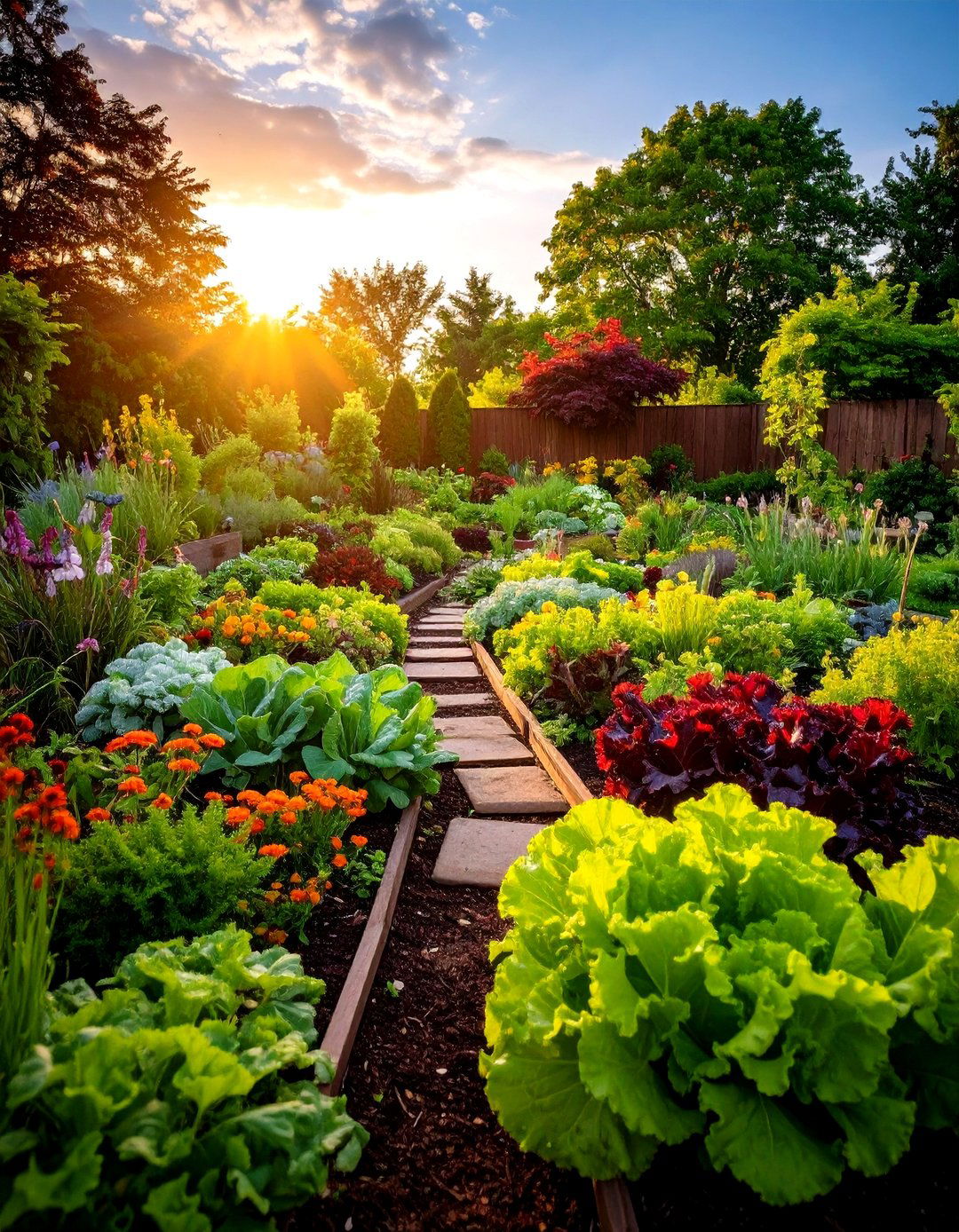
Productive parterre gardens combine formal design principles with vegetable growing, creating beautiful and functional landscapes that provide fresh food while maintaining aesthetic appeal. If you want to fill inside the patterns with vegetables, it is best to choose a sunny location. These gardens organize vegetables by growth habits, harvest times, or culinary uses within geometric patterns, making crop rotation and succession planting more systematic. Attractive edibles like colorful lettuce varieties, ornamental kale, herbs, and compact vegetables can create stunning displays that rival purely ornamental plantings. The structured approach makes garden maintenance more efficient while creating attractive, productive landscapes that celebrate both beauty and function.
11. Monochromatic Parterre Garden

Single-color parterre gardens create sophisticated, cohesive displays that emphasize form, texture, and seasonal changes rather than vibrant color contrasts. Cohesive and simple color schemes better suit a formal style as they have a soothing effect. These gardens might feature all-white displays with silver foliage plants, various shades of green with different textures, or subtle variations of a single color family. The monochromatic approach allows subtle differences in plant form, leaf shape, and seasonal changes to become the primary design elements. This sophisticated strategy creates elegant, calming spaces that feel both contemporary and timeless, proving that restraint in color can create more powerful visual impact than busy, multicolored displays.
12. Four-Season Interest Parterre Garden
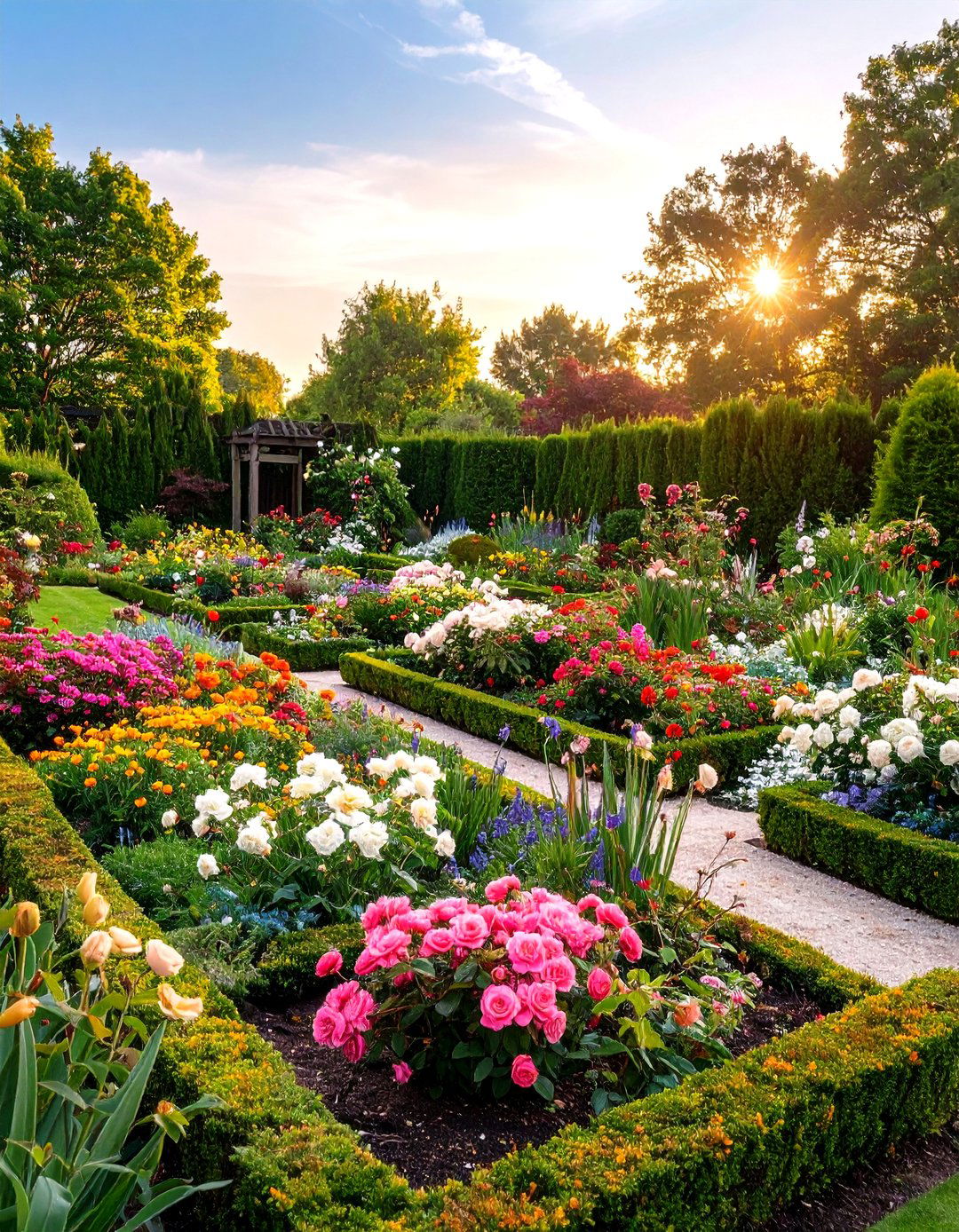
Year-round parterre gardens are designed to provide continuous beauty through careful selection of plants that offer interest in different seasons, from spring bulbs to winter evergreens. Mix of plants through the seasons, such as hellebores to roses, geraniums, asters, and repeat flowering summer and autumn bulbs. These gardens layer different plants with complementary seasonal timing, ensuring that as one display fades, another takes its place. Winter interest might come from evergreen structure and berries, spring from bulbs and early perennials, summer from roses and flowering shrubs, and autumn from late-blooming perennials and colorful foliage. This comprehensive approach creates gardens that justify their space and maintenance requirements through continuous contribution to the landscape.
13. Gravel-Textured Parterre Garden
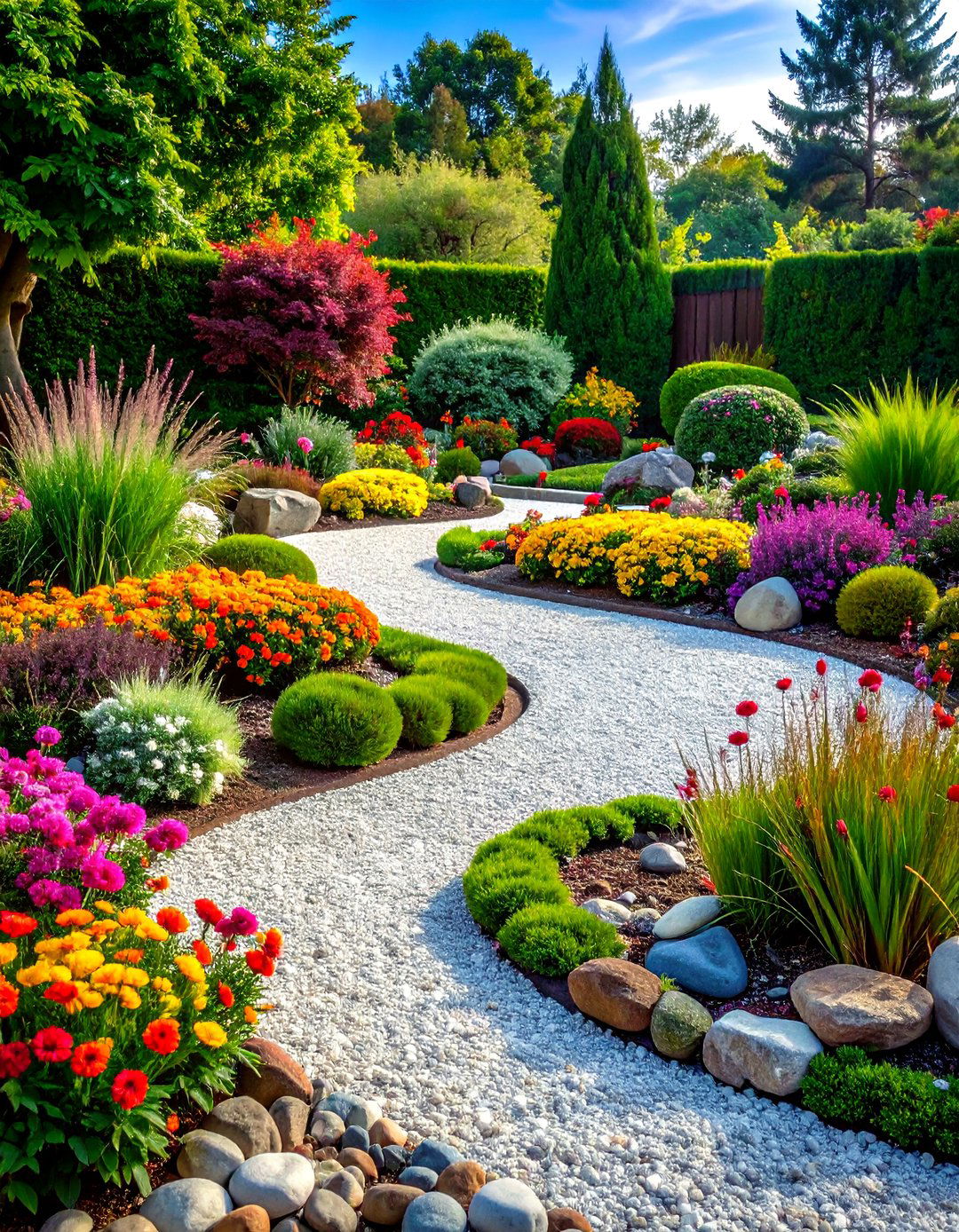
Mineral-focused parterre gardens use different types of gravel, stone, and hardscape materials to create patterns and textures, reducing maintenance while creating striking visual effects. Parterres feature gravel walkways and are separated by gravel, with ornamental arrangements of flower beds. These gardens might use contrasting colors of decomposed granite, different sizes of gravel, or arranged stones to create geometric patterns, with plant materials used sparingly as accent elements. The mineral approach provides excellent drainage, reduces weeding, and creates all-weather surfaces that maintain their appearance regardless of season. This style works particularly well in contemporary settings or areas with challenging growing conditions, proving that parterre principles can be adapted to non-traditional materials.
14. Bulb-Spectacular Parterre Garden

Bulb-focused parterre gardens create dramatic seasonal displays that transform throughout the year, using the geometric structure to organize and intensify the impact of spring and summer flowering bulbs. Spring and summer bulbs, including purple tulips, alliums, and agapanthus create succession of color. These gardens layer different bulb types with varying bloom times, from early crocuses and snowdrops through spring tulips and daffodils to summer alliums and lilies. The formal structure helps organize the complex timing required for continuous bulb displays while providing framework for companion plants that hide dying bulb foliage. This approach creates gardens that build to spectacular spring and summer climaxes while maintaining structure during dormant periods.
15. Native Plant Parterre Garden
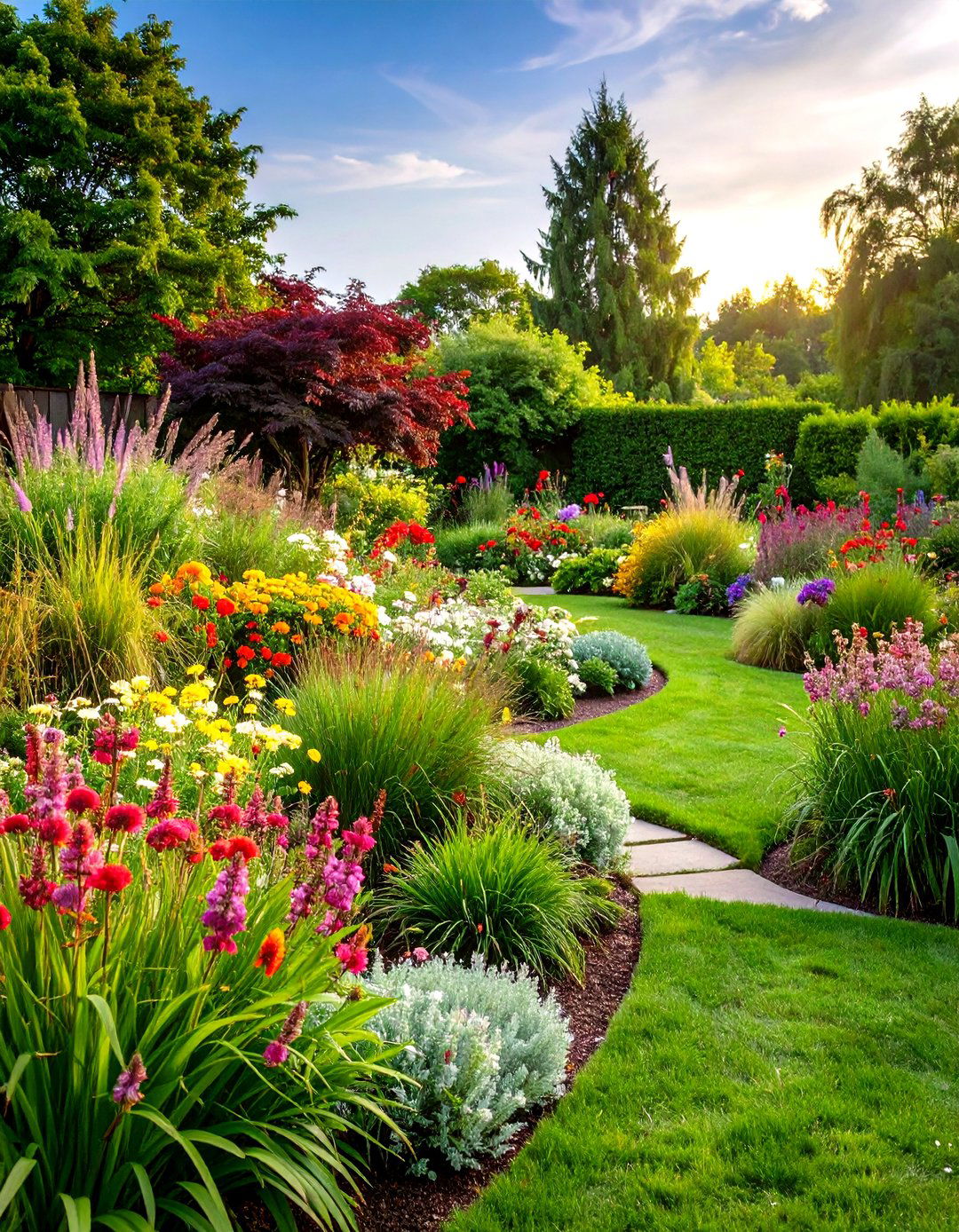
Regionally adapted parterre gardens use native plants arranged in formal patterns, creating designs that support local ecosystems while maintaining classical structure and beauty. Native plants are well-adapted to withstand stressors and thrive where other species struggle. These gardens might feature native grasses, wildflowers, and shrubs arranged in geometric patterns that reflect regional landscape characteristics while providing habitat for local wildlife. The native approach reduces maintenance requirements, eliminates the need for extensive irrigation, and creates gardens that feel connected to their local environment. This sustainable strategy proves that formal design principles can be successfully applied to ecological gardening, creating beautiful spaces that support biodiversity while maintaining human aesthetic preferences.
16. Mediterranean-Style Parterre Garden

Sun-loving parterre gardens inspired by Mediterranean landscapes combine drought-tolerant plants with formal geometry, creating gardens that thrive in warm, dry climates while maintaining year-round beauty. Plants like rosemary, lavender, and santolina are excellent choices for Mediterranean climates. These gardens feature aromatic herbs, silvery foliage plants, and flowers in blues, purples, and whites arranged in geometric patterns reminiscent of classical European gardens. Materials like terra cotta, natural stone, and gravel complement the plant palette while providing excellent drainage. The Mediterranean approach creates gardens that are both beautiful and practical, requiring minimal water while providing continuous interest through fragrant foliage and seasonal flowering displays.
17. Shaded Parterre Garden
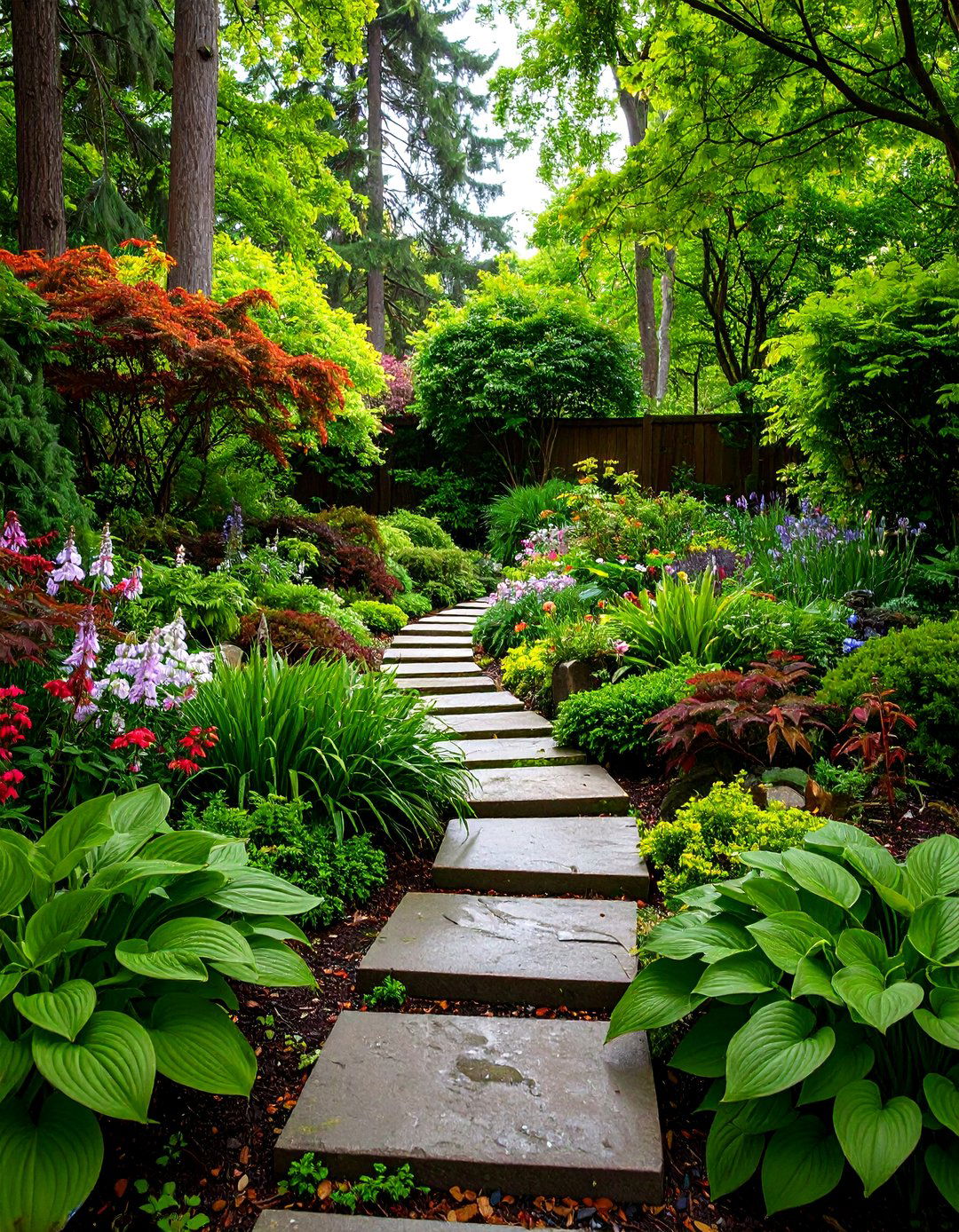
Woodland-adapted parterre gardens prove that formal design principles can be successfully applied to challenging shaded conditions, using shade-tolerant plants to create sophisticated displays in difficult locations. Hardy evergreens like yew, with perennials such as hostas or heucheras, can provide seasonal color in shaded areas. These gardens might feature patterns created with different hosta varieties, ferns, and shade-loving perennials arranged in geometric forms that bring order to naturalistic woodland settings. The challenge of limited light encourages focus on foliage texture, plant form, and subtle color variations rather than bright flowers. This approach creates serene, contemplative spaces that demonstrate how formal principles can enhance rather than compete with natural conditions.
18. Water-Feature Parterre Garden
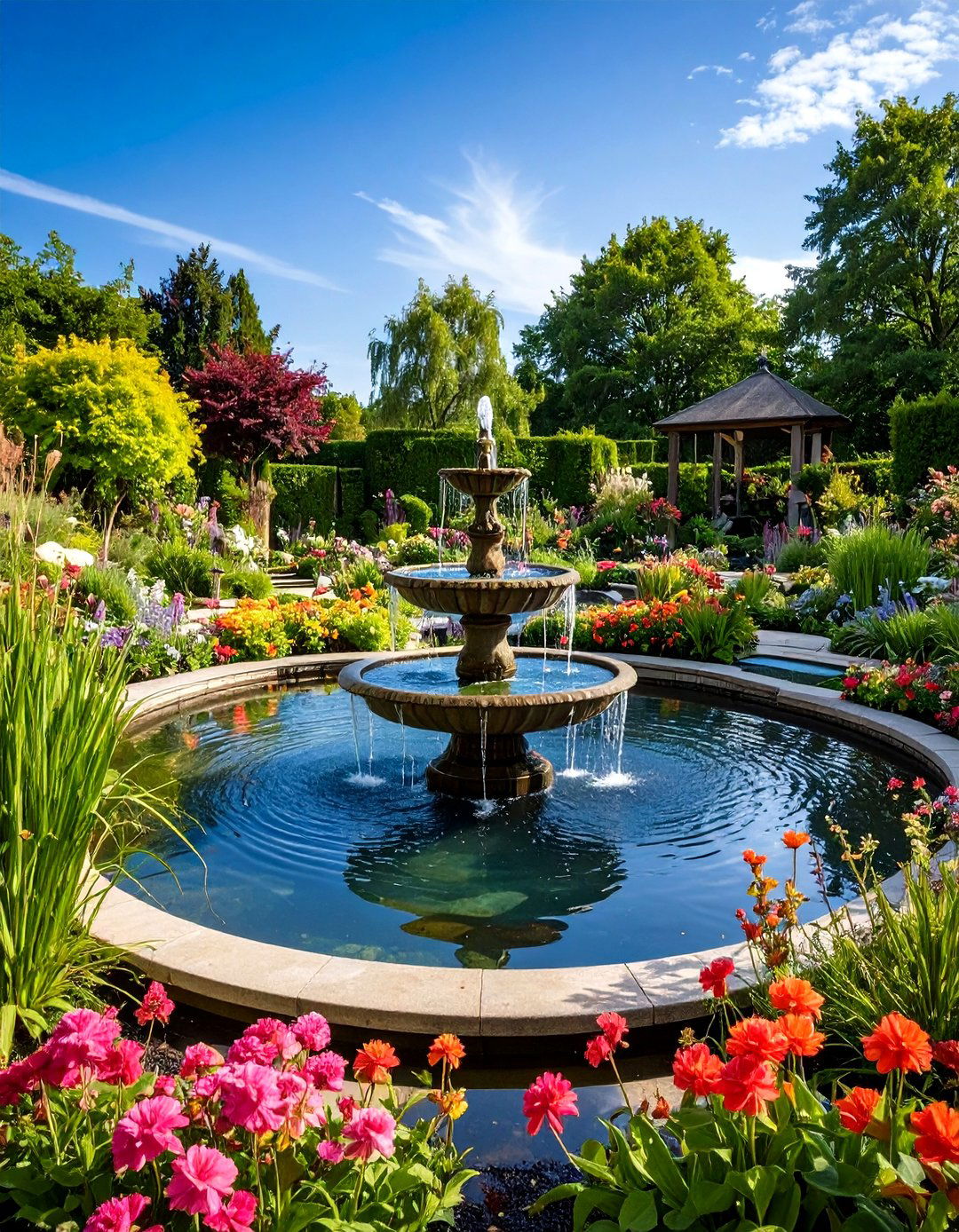
Fountain-centered parterre gardens incorporate water elements as focal points within geometric plant arrangements, creating cooling, reflective surfaces that enhance the formal structure. Traditional parterres often included fountains or water features as central focal points, with contemporary interpretations including mill wheel fountains. These gardens might feature central pools, fountains, or water channels that reflect surrounding plants and sky while providing soothing sounds and cooling effects. The water elements serve as organizing principles for the geometric bed arrangements while creating opportunities for water-loving plants and adding vertical movement to horizontal garden patterns. This classical approach creates gardens that engage multiple senses while maintaining the structured beauty that defines parterre design.
19. Cottage Garden-Inspired Parterre Garden
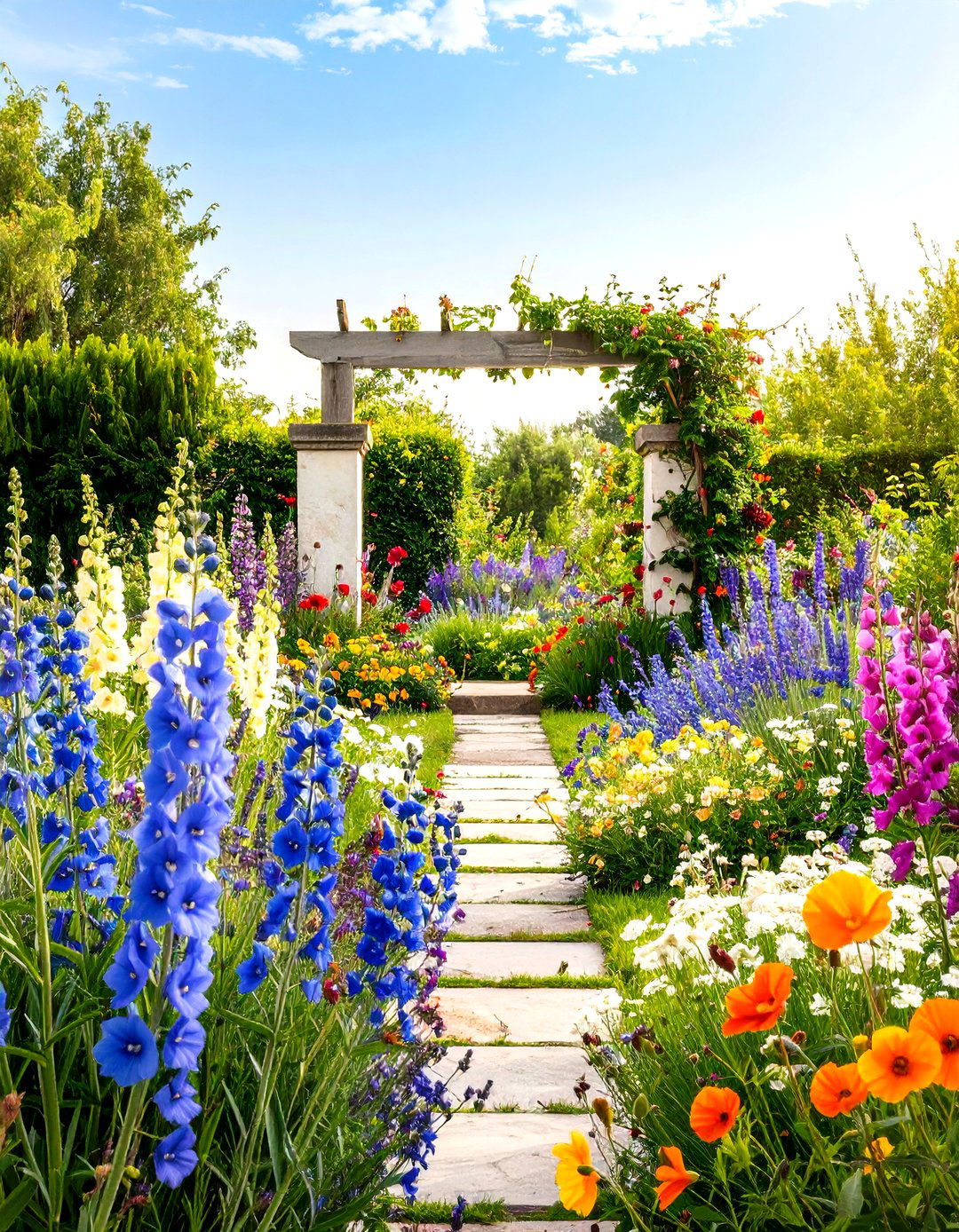
Informal parterre gardens blend casual cottage garden plants with formal geometric structure, creating designs that feel both structured and relaxed. Naturalistic planting design can let roses intermingle with other plants in contemporary arrangements. These gardens might feature traditional cottage plants like delphiniums, hollyhocks, and sweet peas arranged within geometric frameworks that provide structure without feeling rigid. The combination of informal plants with formal organization creates gardens that feel lived-in and comfortable while maintaining visual coherence. This hybrid approach appeals to gardeners who appreciate both the romance of cottage gardens and the clarity of formal design, proving that these seemingly opposite styles can be successfully combined.
20. Sculptural Modern Parterre Garden
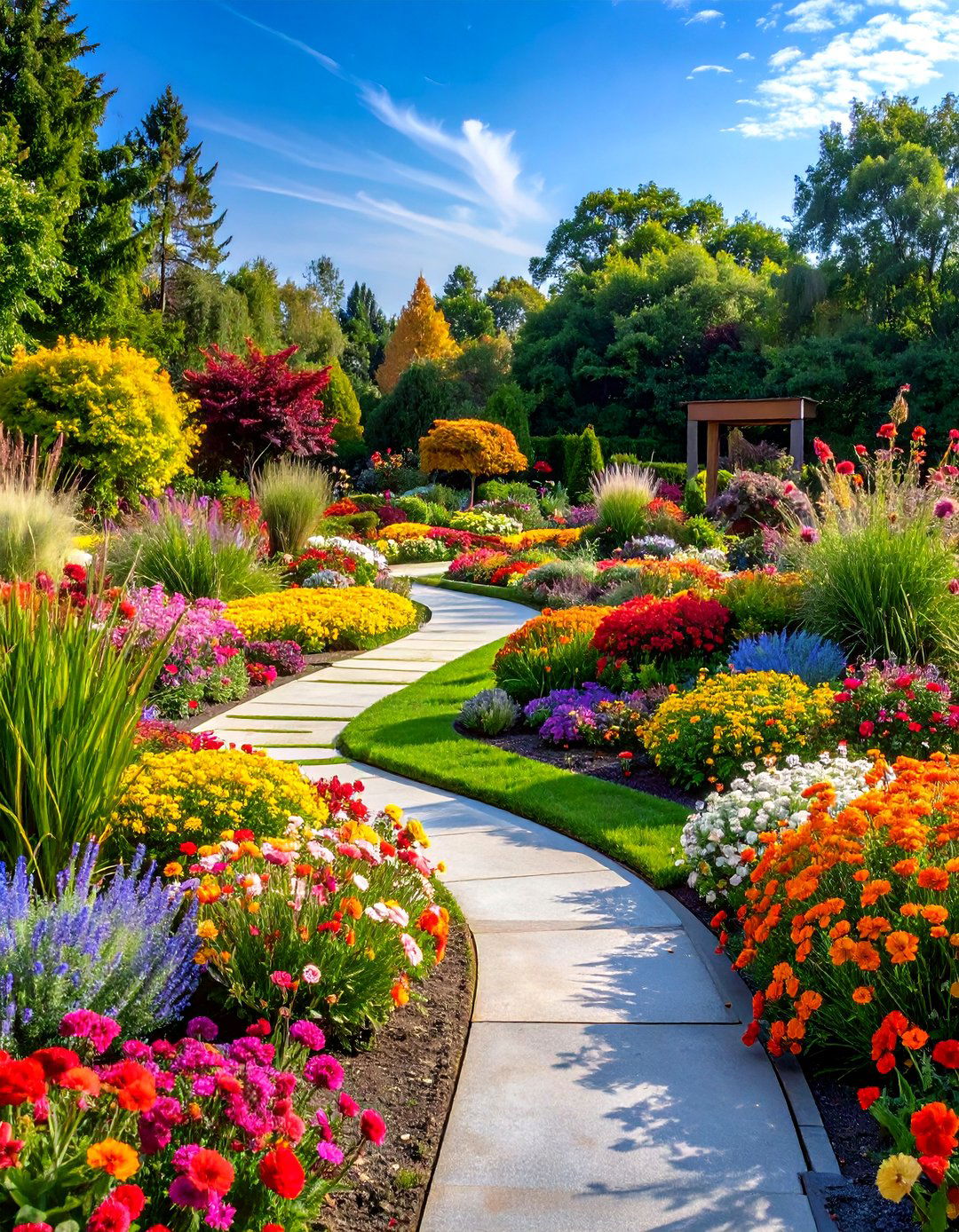
Contemporary art-inspired parterre gardens push the boundaries of traditional design, incorporating modern materials, unusual plants, and artistic elements that challenge conventional parterre concepts. Abstract, geometric shapes can work well and give a more classical contemporary feel to the design. These gardens might feature unexpected materials like colored concrete, metal edging, or recycled materials arranged in geometric patterns with architectural plants like ornamental grasses, succulents, and modern perennials. The artistic approach treats the entire garden as a living sculpture that changes with seasons and growth, creating dynamic displays that engage viewers intellectually as well as aesthetically. This innovative strategy demonstrates how classical principles can be reimagined for contemporary audiences while maintaining the essential characteristics that make parterre gardens timelessly appealing.
Conclusion:
Parterre gardens continue to captivate gardeners and landscape designers through their unique combination of mathematical precision and natural beauty. Whether embracing traditional boxwood patterns or exploring contemporary interpretations with native plants and modern materials, these formal gardens provide structure, seasonal interest, and sophisticated beauty that enhances any landscape. The key to successful parterre design lies in understanding the balance between geometric order and plant selection, creating spaces that are both visually striking and practically maintainable for years of enjoyment.


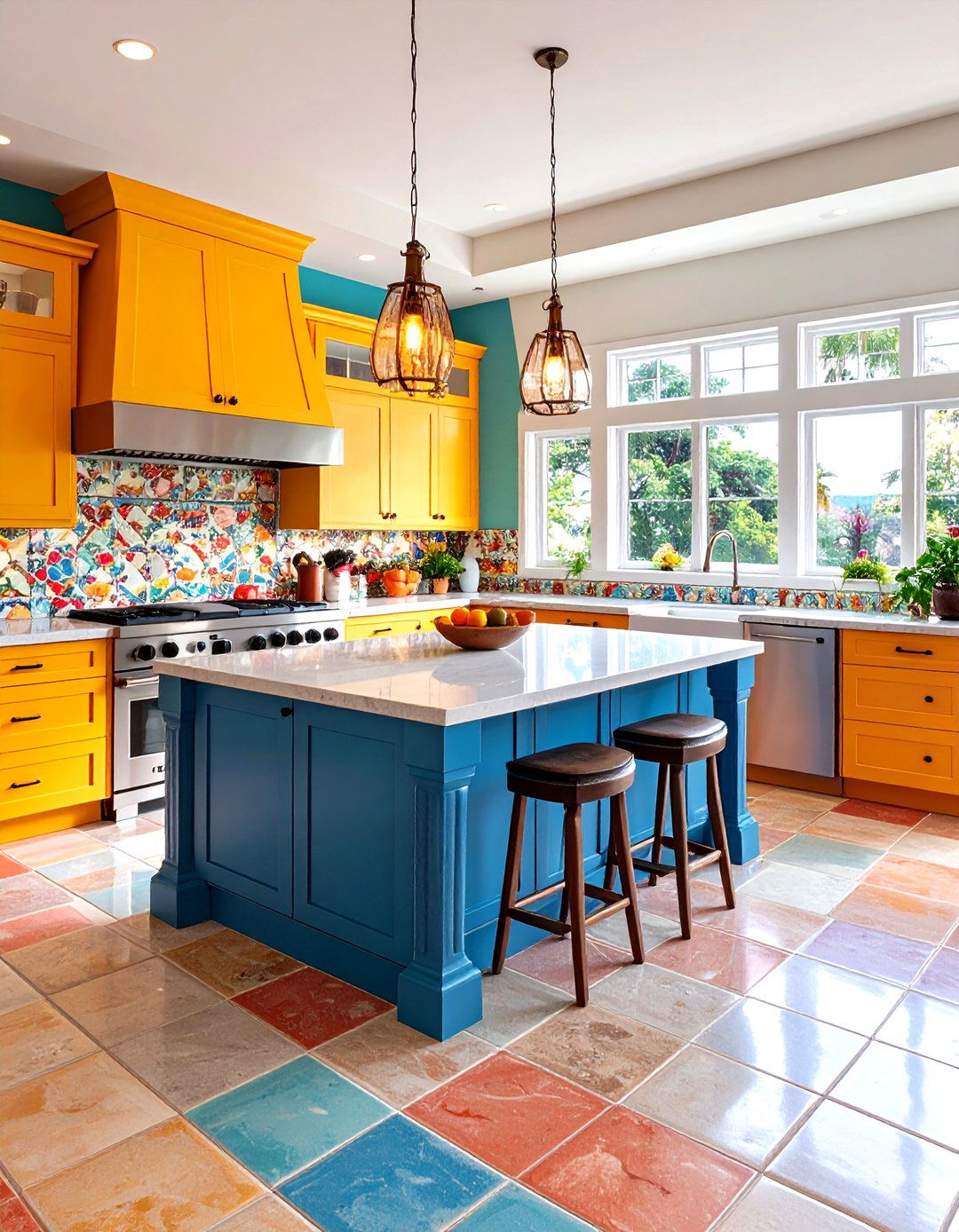
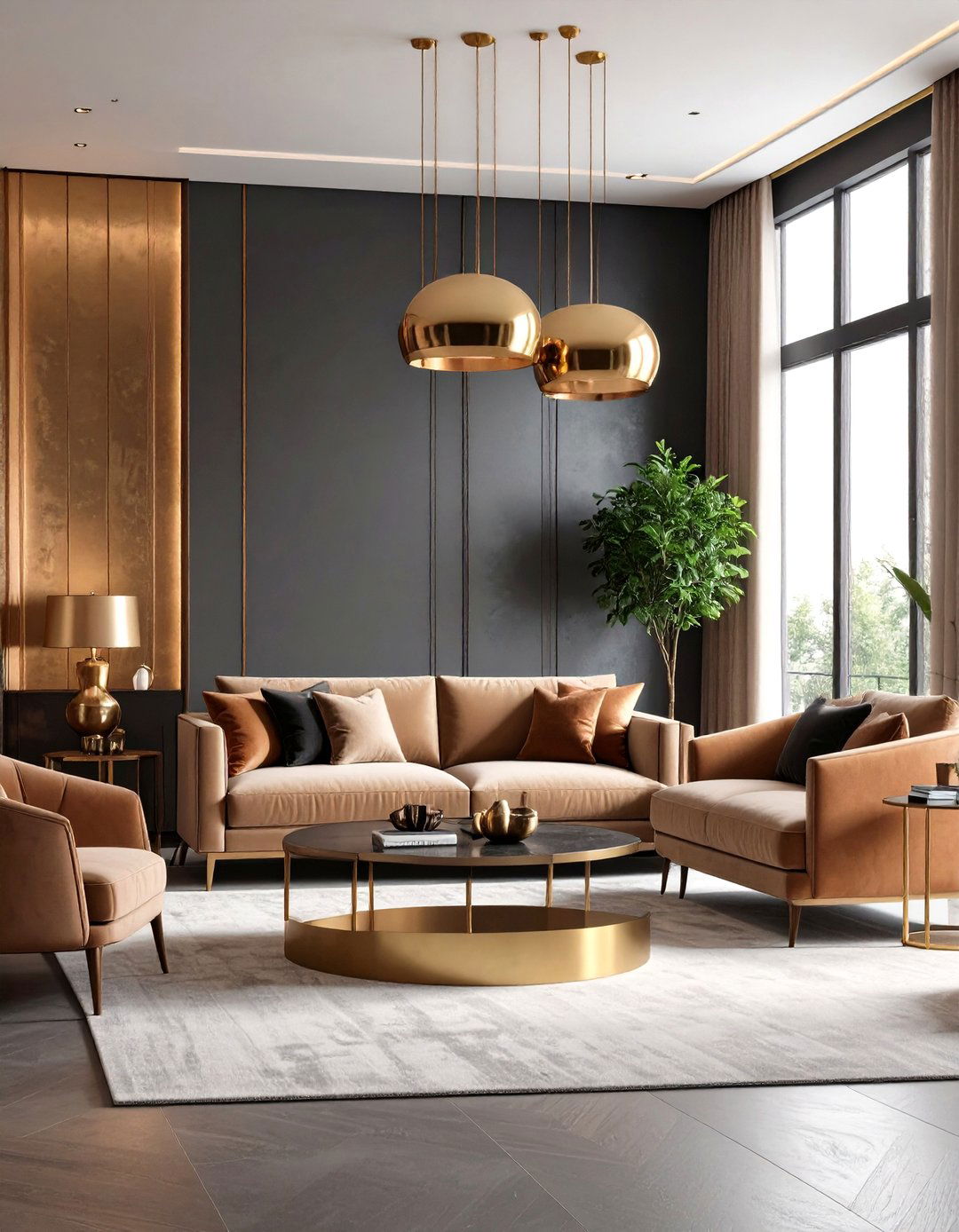
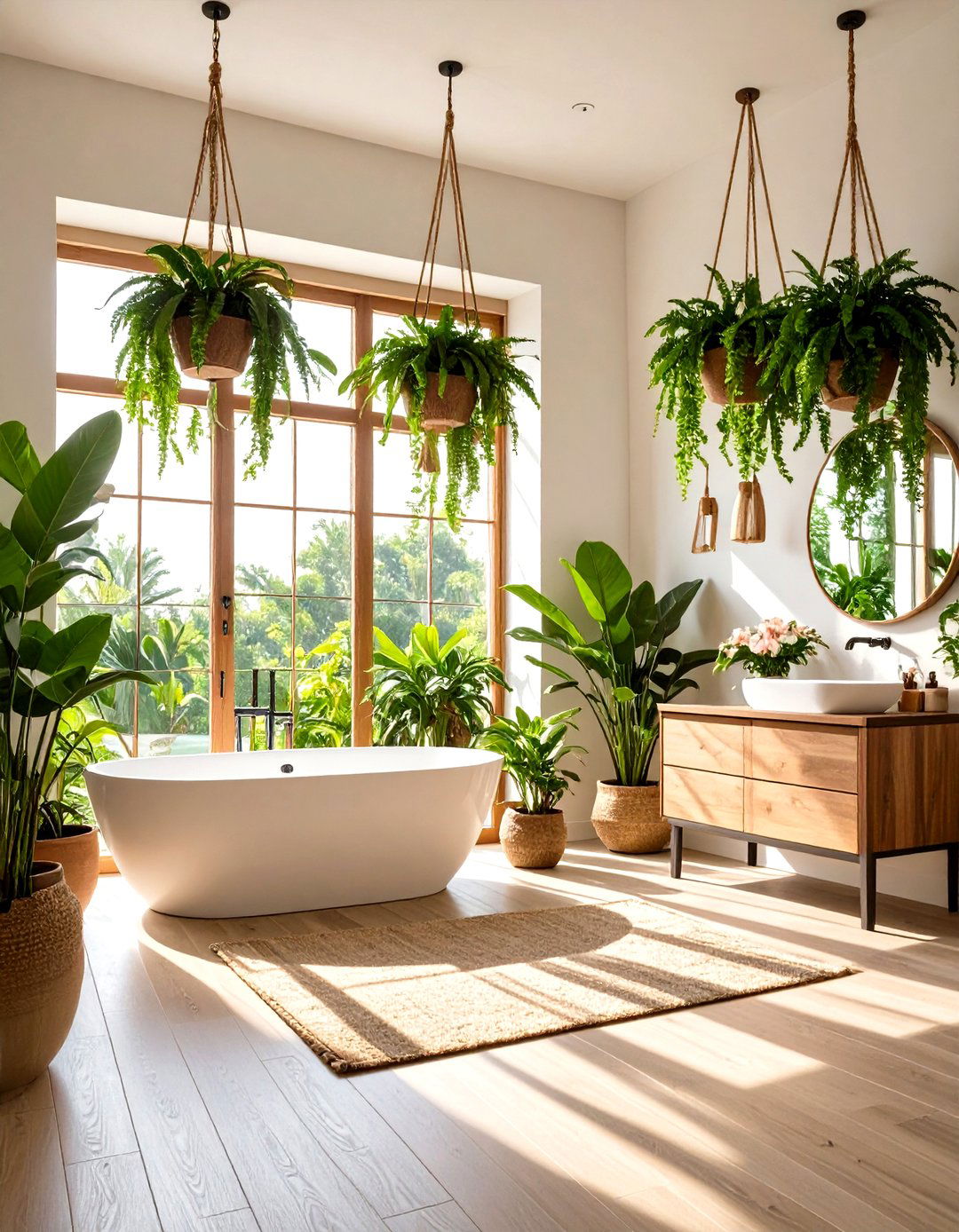
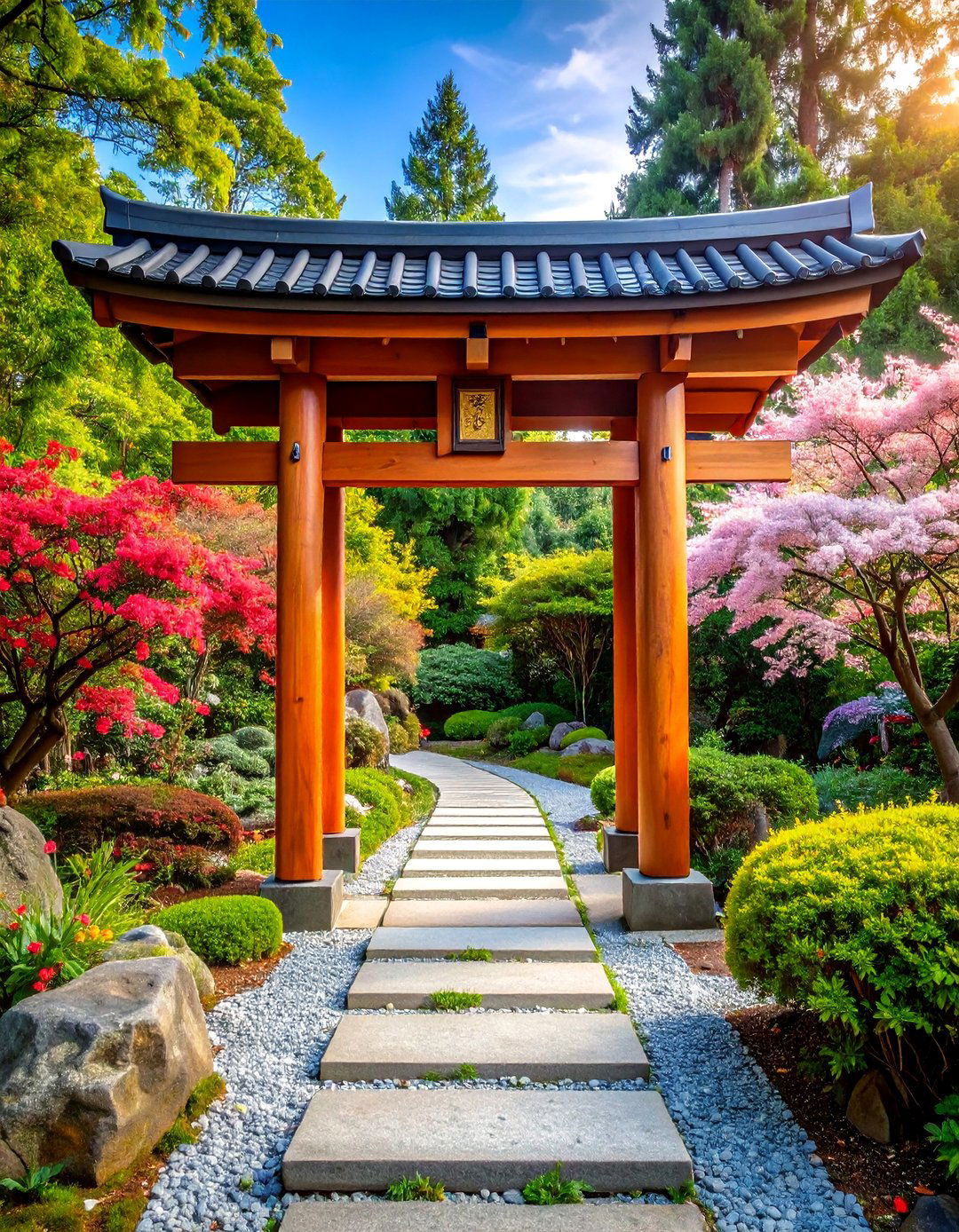
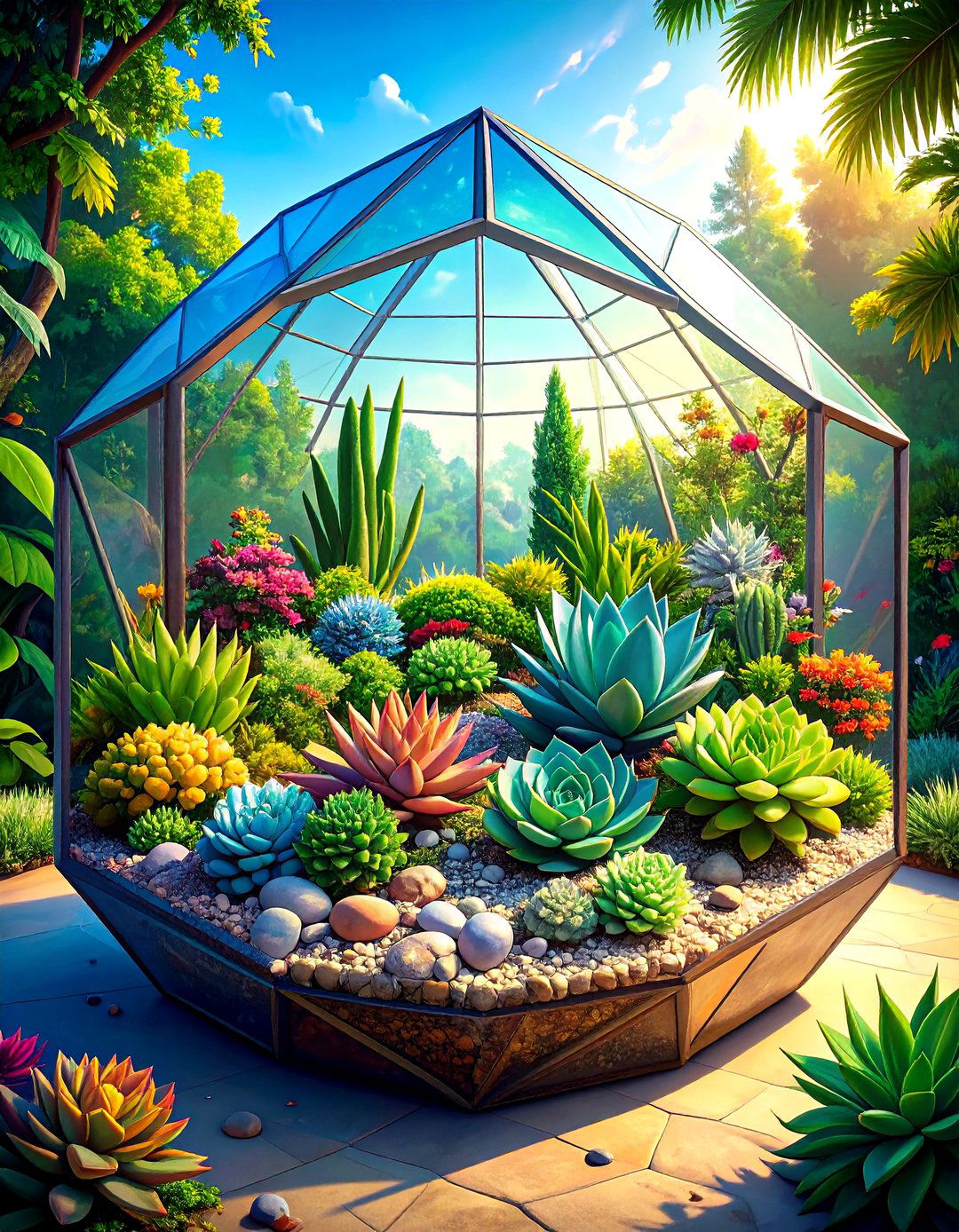
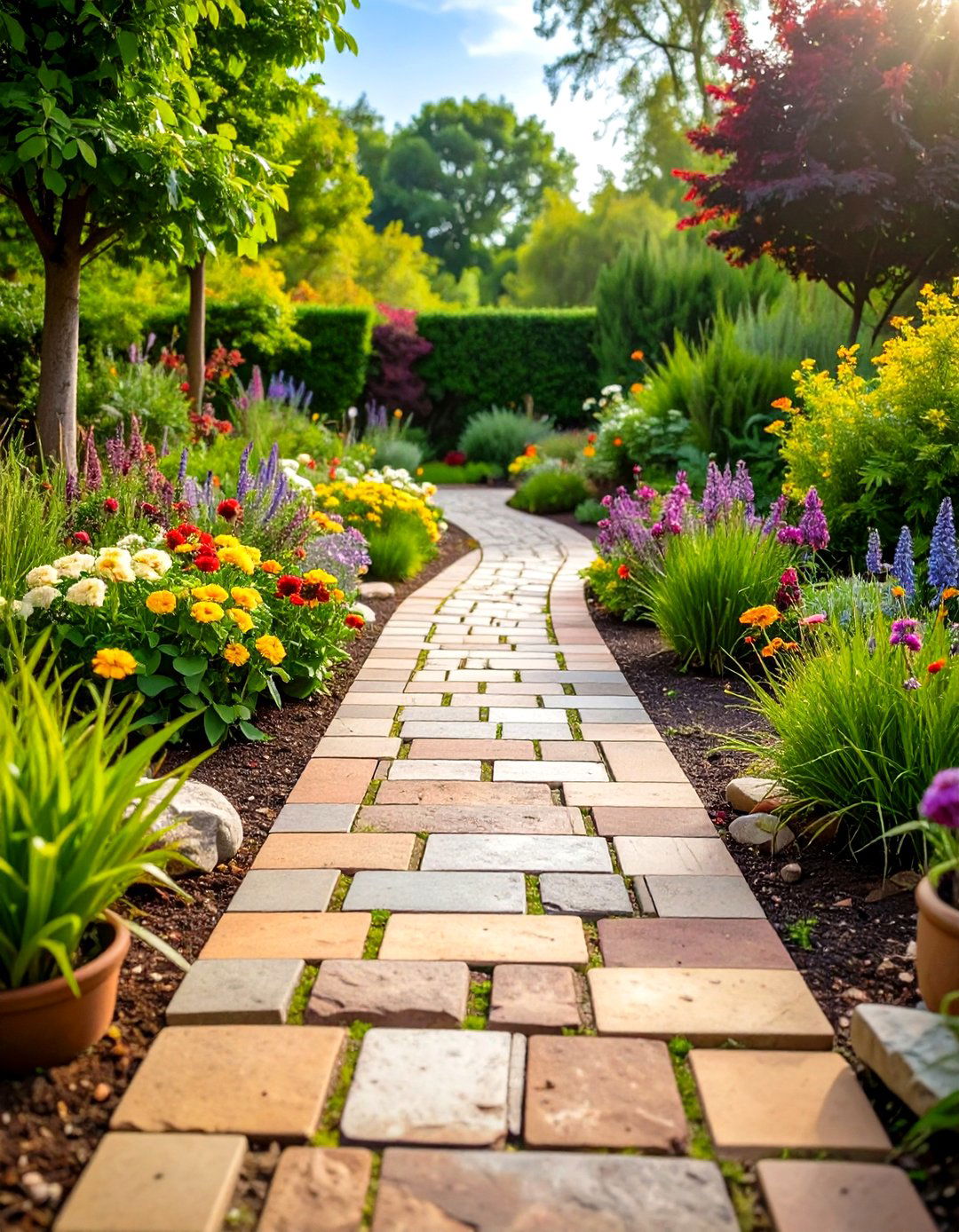
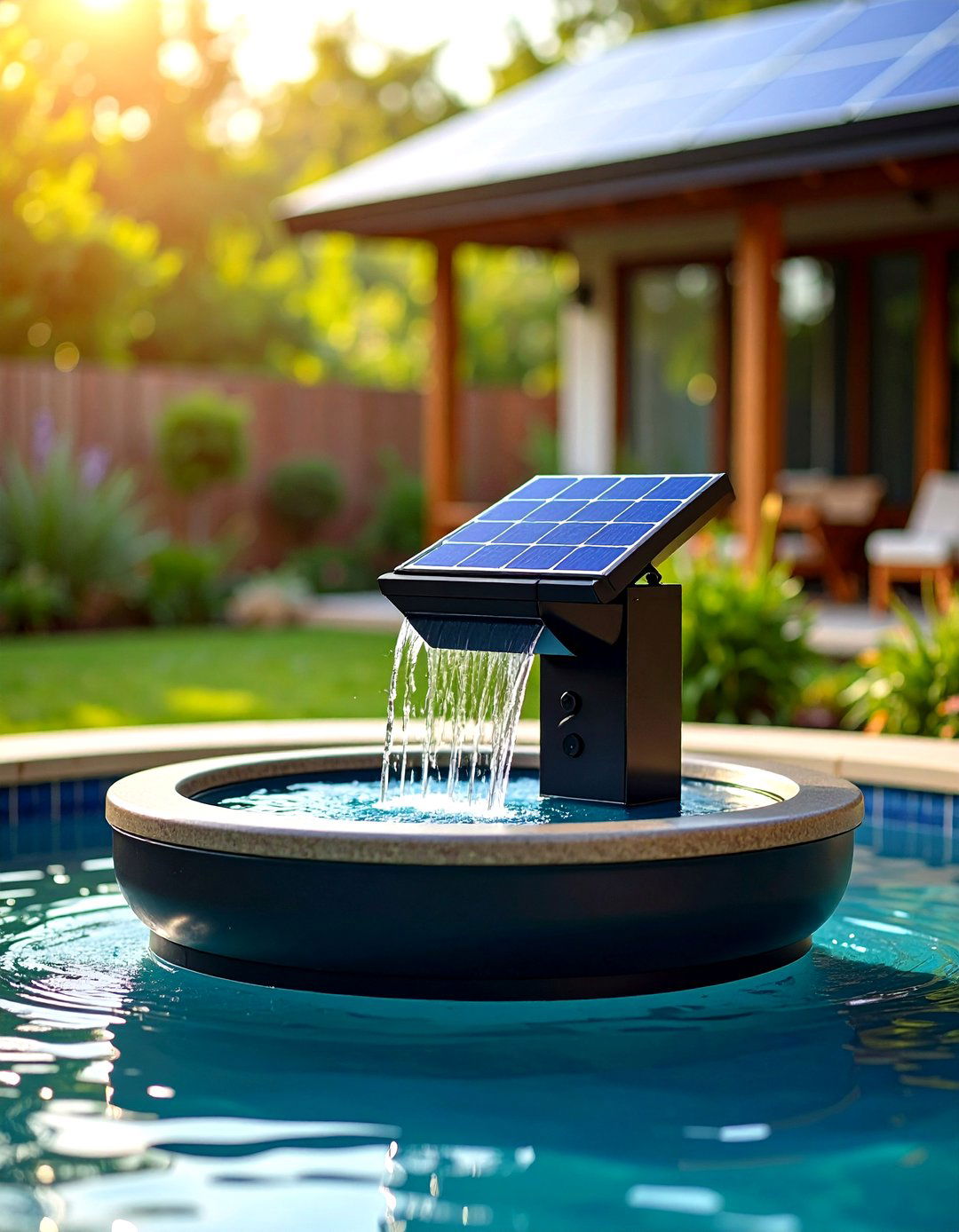

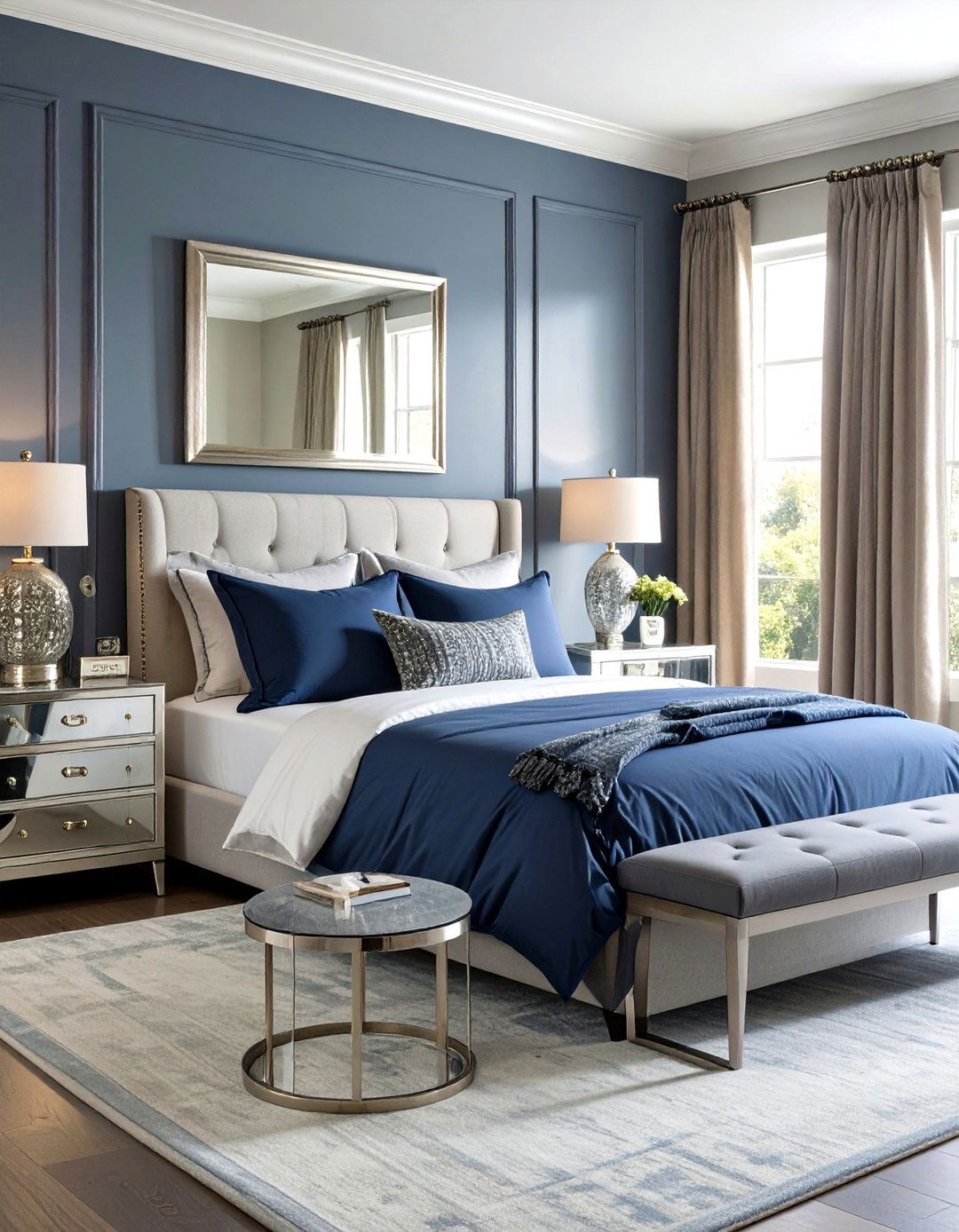


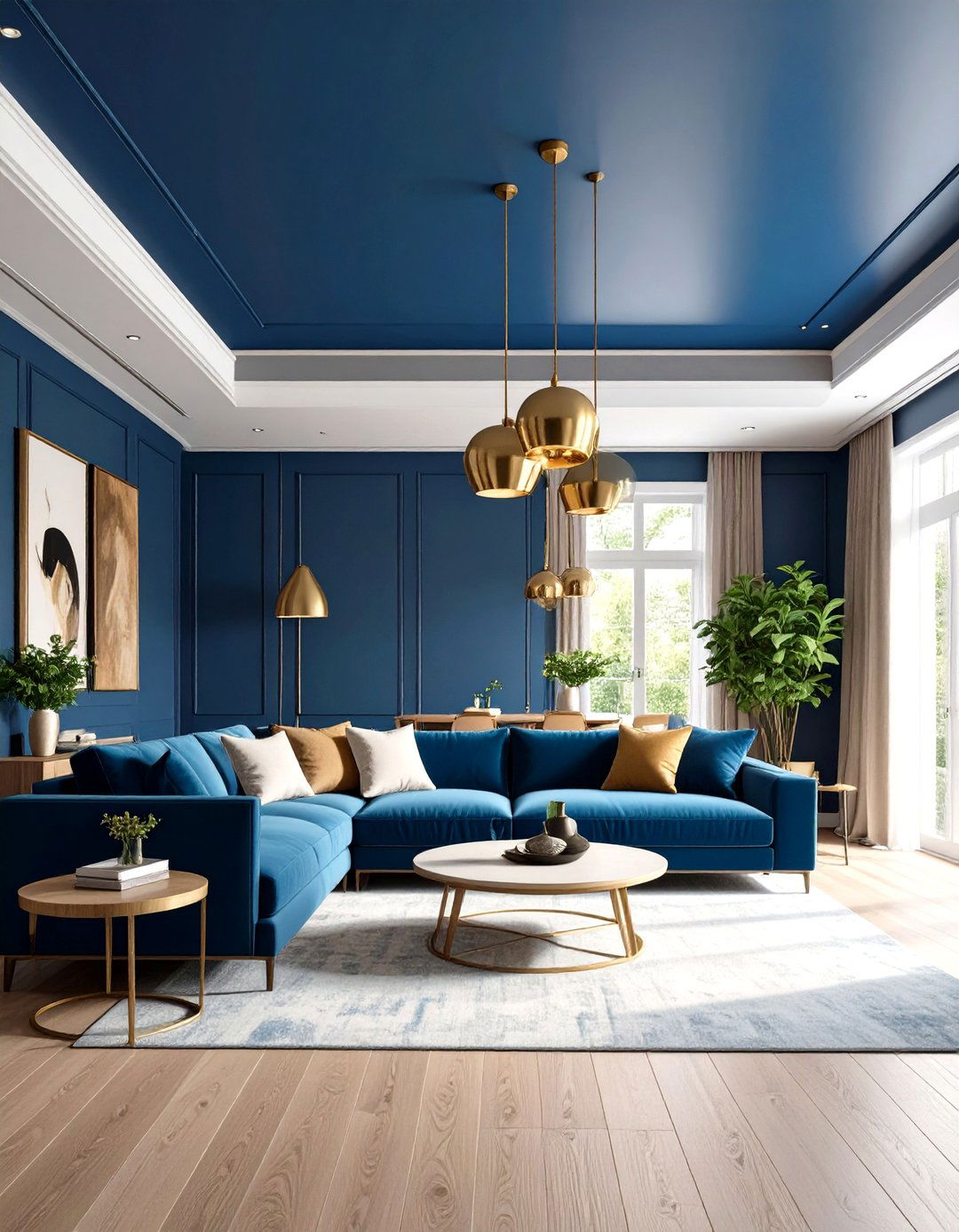

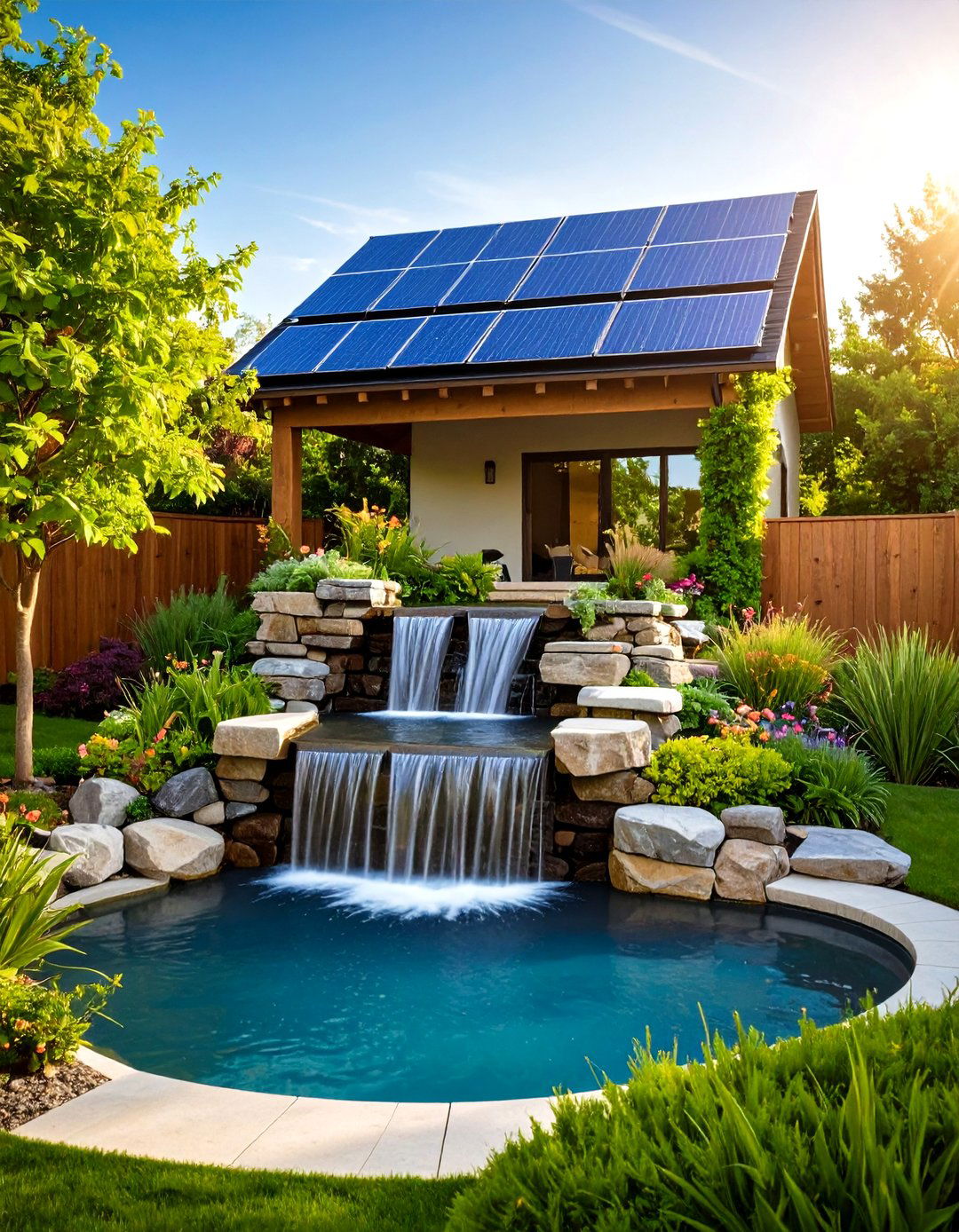

Leave a Reply